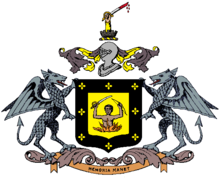| This article needs additional citations for verification. Please help improve this article by adding citations to reliable sources. Unsourced material may be challenged and removed. Find sources: "Chhota Udaipur" – news · newspapers · books · scholar · JSTOR (May 2018) (Learn how and when to remove this message) |
Town in Gujarat, India
| Chhota Udaipur | |
|---|---|
| Town | |
  | |
| Coordinates: 22°18′20″N 74°0′50″E / 22.30556°N 74.01389°E / 22.30556; 74.01389 | |
| Country | |
| State | Gujarat |
| District | Chhota Udaipur |
| Population | |
| • Total | 25,787 |
| Languages | |
| • Official | Gujarati, Hindi |
| Time zone | UTC+5:30 (IST) |
| Vehicle registration | GJ-34 |
| Website | gujaratindia |
Chhota Udaipur is a district in the Indian state of Gujarat. Established on August 15, 2013, by dividing Vadodara district, it consists of six talukas: Chhota Udepur, Pavijetpur, Kawant, Naswadi, Sankheda, and Bodeli. The district headquarters is located in Chhota Udepur. It is a town and a municipality in Chhota Udaipur district.
History

Chhota Udaipur was originally ruled by Bhil king , The last Bhil king of Chhota Udaipur was Kaliya Bhil in 1484. Chhota Udaipur was the capital of the erstwhile Princely State of Chhota Udaipur, founded in 1743 by Rawal Udeysinhji, a descendant of Patai Rawal of Champaner. This state was a First class state under Rewa Kantha Agency and merged with the Union of India on 10 March 1948.
Rulers (title Maharaja Maharawal)
- 1762 – 1771 Arsisinhji
- 1771 – 1777 Hamirsinhji II
- 1777 – 1822 Bhimsinhji
- 1822 – 1851 Gumansinhji
- 1851 – 1881 Jitsinhji
- 1881 – 1895 Motisinhji
- 1895 – 29 Aug 1923 Fatehsinhji (b. 1884 – d. 1923)
- 29 Aug 1923 – 15 Oct 1946 Natwarsinhji Fatehsinhji (b. 1906 – d. 1946)
- 15 Oct 1946 – 15 Aug 1947 Virendrasinhji (b. 1907- d. 27 June 2005)
Demographics
As of 2001 India census, Chhota Udaipur had a population of 27,165. Males constitute 51% of the population and females 49%. Chhota Udaipur has an average literacy rate of 69%, higher than the national average of 59.5%; with male literacy of 76% and female literacy of 62%. 11% of the population is under 6 years of age.
Culture
The Kali Niketan (Nahar Mahal) palace, built as the summer residence of the erstwhile royal family is a notable monument in Chhota Udaipur. Chhota Udaipur is also known for the Rathwas in and around the city. The Rathwas are known for Pithora painting, usually carried out on the walls of the village houses. The tribal museum of Chhota Udaipur has a large collection of tribal artefacts. Many tribal artefacts are also brought for sale in the hats (weekly markets) in the city and nearby villages. Industries in largest dolomite lums and powder.
References
- मीणा, गंगा सहाय. आदिवासी साहित्य पत्रिका: अंक-9 (in Hindi). Ganga Sahay Meena.
- "Census of India 2001: Data from the 2001 Census, including cities, villages and towns (Provisional)". Census Commission of India. Archived from the original on 16 June 2004. Retrieved 1 November 2008.